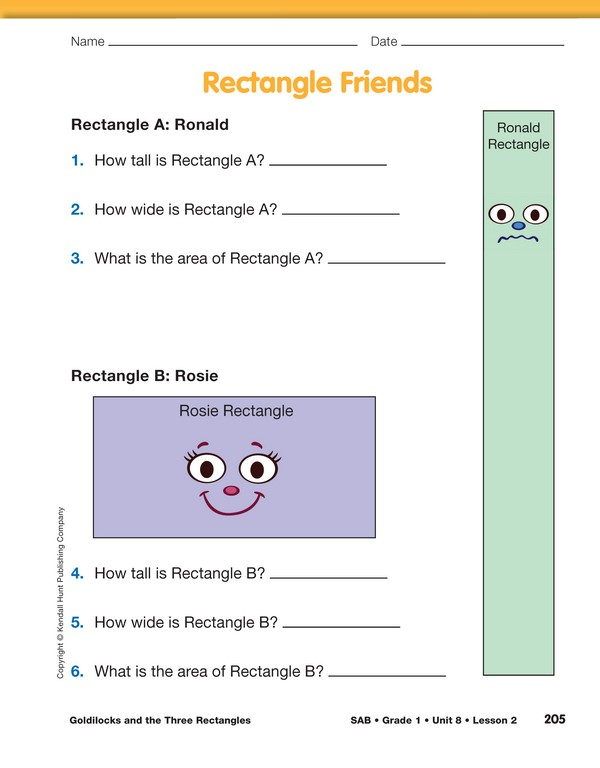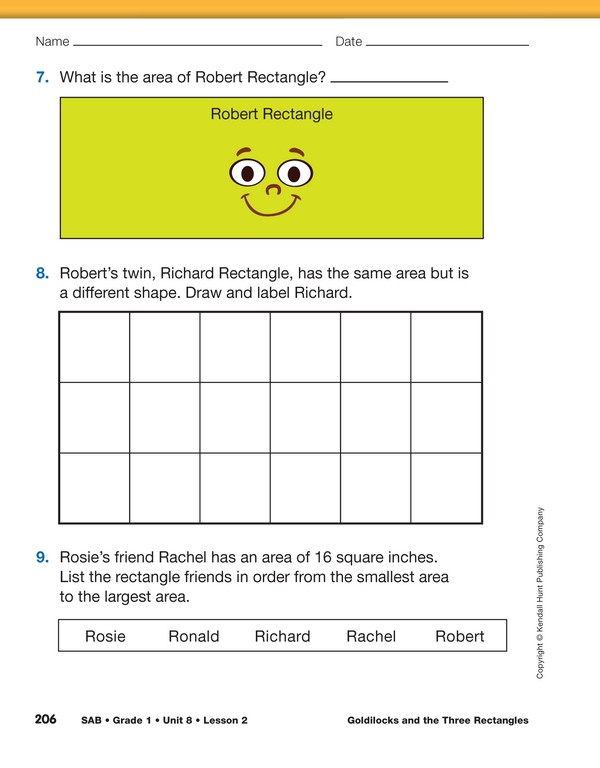Compare Pennies to Square Tiles. Remind students of the previous lesson’s activity where they
used pennies to measure the areas of clouds. Review the problems they encountered when estimating area with pennies.
- Do you think pennies will work as well as tiles in measuring rectangles? Why or why not?
(Possible response: No, because the pennies are round and the rectangles have straight lines. The pennies would leave spaces not covered.)
- Would square-inch tiles work well with the clouds? Why or why not? (Possible response: Pennies are better for the clouds because the curves of the
pennies match the curves of the clouds better. The corners of the tiles would stick out when the cloud curves and that makes it hard to count a part of a tile.)
- Why did we call the measurements of the clouds “estimates”? (There was space not covered by the pennies. The tiles on the rectangles fit evenly.)
Display a copy of the first Rectangle Friends page and direct students’ attention to Rectangle A: Ronald and Rectangle B: Rosie.
- How are the two shapes alike? (They are both rectangles.
- How are they different? (They have different shapes.
A is tall and not very wide. B is short and wide.)
- How can you measure how long the sides of these shapes are? (We can use a ruler.)
- How can you measure the area of these shapes? (We can cover it with square-inch tiles and count them.)
- Silently predict which of these three statements is
true; do not tell your prediction aloud: Rectangle A
has a larger area than Rectangle B. Or, Rectangle
B has the larger area. Or, both rectangles have the
same area. I will ask you to keep your eyes closed
and signal your choice by holding 1 finger up if
you think Rectangle A has a larger area, 2 fingers
up if you think Rectangle B has a larger area, or
3 fingers up if the rectangles have the same area.
Close your eyes and signal now: 1 finger for
Rectangle A, 2 fingers for Rectangle B, 3 fingers if
you think both rectangles have the same area.
Distribute 15–20 square-inch tiles to each student (extras are purposely included) and provide time for
students to complete the Rectangle Friends pages. Remind students to use Math Practices 2 and 6, Find
a strategy and Use labels, when writing their answers.
Use the Rectangle Friends pages to assess students’ abilities to measure length in inches [E5]; compare and order
quantities (e.g., lengths, areas) [E1]; find the area of a shape by counting square units [E6]; recognize that different
shapes can have the same area [E4]; and use labels to explain what numbers mean [MPE6].















